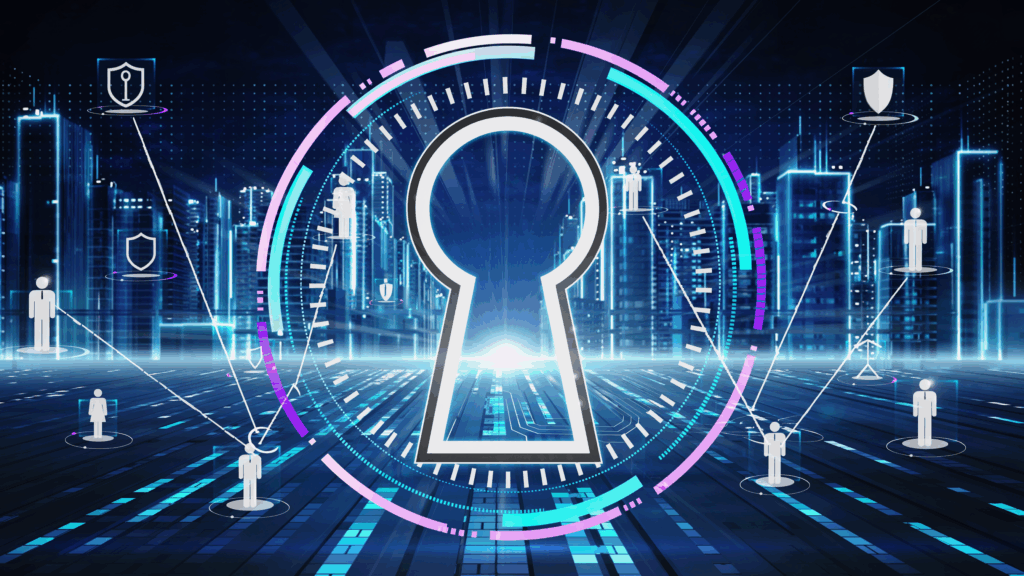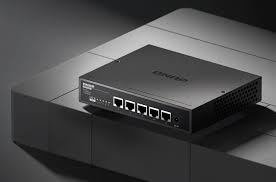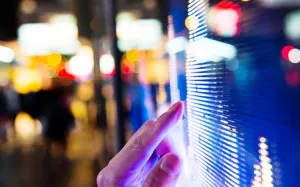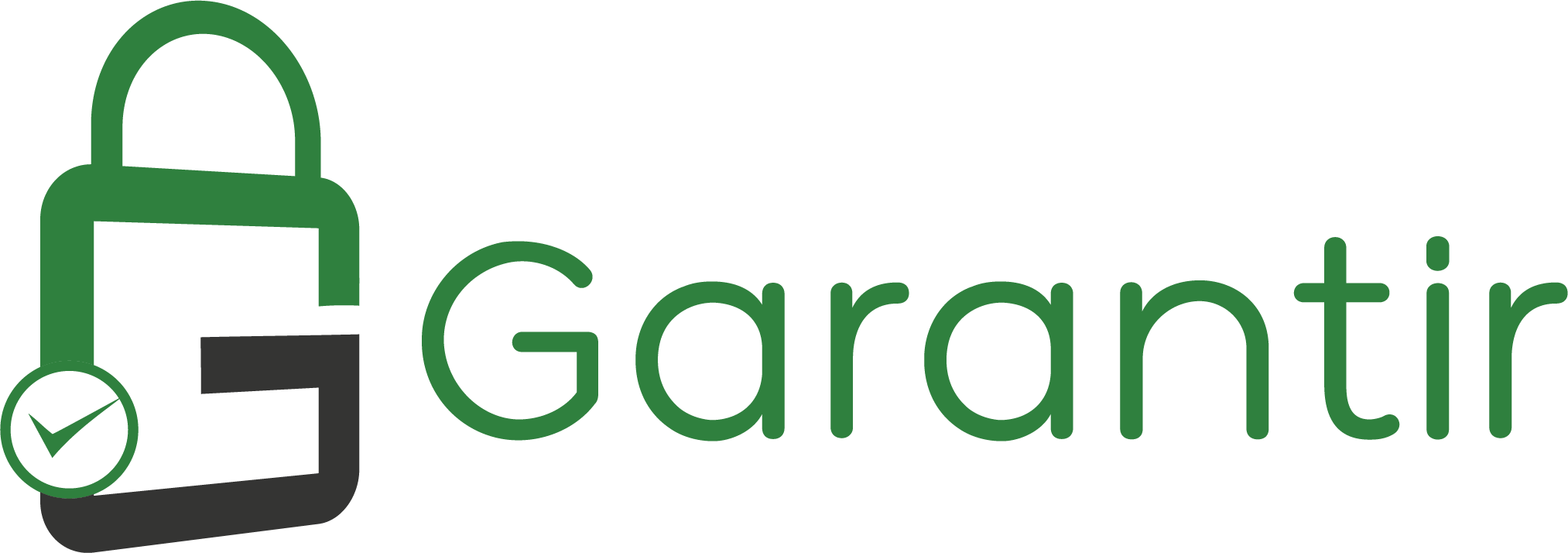Navigating Physical Security: Top Trends You Should Know About in 2024
In the ever-evolving world of
physical security, staying ahead means embracing the dynamic shifts and
innovations that shape the industry’s landscape. As we set our sights on 2024,
a year set to redefine security standards, Videonetics stands as a leading
force committed to deciphering the upcoming trends that will impact how we
safeguard our cities, premises, people, assets, and invaluable resources.
Explore the following key trends
to stay informed and enhance your security measures -
A. Emergence of On-the-Spot Computing
The security industry is
experiencing a transformative change due to the rise of on-the-spot computing.
As security systems progress and generate increasing amounts of data, the need
for real-time data processing has never been more crucial. On-the-spot
computing, which essentially means processing data at the edge of a network, is
gaining prominence for its ability to address this need. This approach allows
for quick and responsive security systems by reducing latency and processing
time, enabling them to counter potential threats promptly.
This emerging approach of on-the-spot
computing offers clear advantages over centralized models by handling data
closer to its source. It unlocks the potential for real-time processing at
accelerated speeds, resulting in action-oriented outcomes.
● Reduced Bandwidth Usage: By
processing data at the edge, only relevant information or events can be sent to
the central system, reducing the amount of data that needs transmission over
the network. It can be particularly beneficial in applications with limited
bandwidth. Edge AI systems can continue to operate even in the absence of a
network connection.
● Increased Privacy and Security:
Edge AI can perform analytics on the edge device without transmitting sensitive
data to a central server. It enhances privacy and security, as potentially
sensitive information doesn’t need transmission over the network.
● Secure & Scalable: Edge
AI system architecture is modular, scalable and distributed. Processing data
locally can ensure that certain types of sensitive information stay within
specific geographical boundaries, aligning with data protection regulations.
B. Multi-Modal Analytics for Improved Detection
In pursuit of heightened
security, the trend of security systems utilizing multi-modal analytics takes
center stage. Multi-modal analytics, powered by AI, enables security systems to
analyze data from various sources, including images, video footage, audio
recordings, and other sensor data. This comprehensive approach allows systems
to detect more intricate patterns and behaviours, significantly improving their
effectiveness in identifying potential threats. Multimodality, involving the
collaboration between multiple resources or systems, enhances threat detection
by reconstructing the overall picture based on data from various sources and
providing a more accurate depiction of an event, helping security personnel make
better-informed decisions.
● Increased Accuracy and
Robustness: Multi-modal analytics can improve accuracy in threat detection.
Different modalities may capture complementary information and combining them
allows the system to cross-verify and reduce false positives or negatives.
Multi-modal systems are often more robust in challenging environments and
detect threats detected early. For example, if one modality, such as visual
data, is compromised (e.g., due to poor lighting conditions), other modalities
like audio and other sensors can still provide valuable information.
● Object Tracking and
Identification: Multi-modal analytics can improve object tracking and
identification capabilities. Integrating data from various sensors and cameras
allows for more accurate tracking of individuals or objects across different environments.
For example, by combining the intelligence and capabilities of RADAR, Camera,
and Analytics Server, we can have more insights and accurate events in Advanced
Traffic management solutions
C. Integration of AI with Visual Intelligence
The integration of Artificial
Intelligence (AI) with visual intelligence marks a significant leap in the
capabilities of security systems. By leveraging AI algorithms, systems
automatically detect and track suspicious behaviour, adapting over time to
improve accuracy and effectiveness.
Various industries are looking to
adopt AI-enabled video analytics to gain actionable insights:
● Industrial sites can ensure
better safety and compliance by detecting safety hazards like smoke, fire,
accidents, people not wearing helmets/PPE, etc. through video feeds and AI
algorithms. Real-time alerts can prevent injuries and damage.
● Urban municipalities and law
enforcement agencies can leverage crowd behaviour monitoring,
aggression/violence detection, and real-time alerts for prohibited activities to
detect crime, track suspects, and respond faster to emergencies. Automated license
plate recognition can help identify wanted vehicles or suspects.
● Transportation hubs and traffic
authorities can analyze video feeds to detect traffic violations, prevent congestion,
and respond to incidents quickly using analytics for vehicle classification,
wrong-way driving detection, and more.
● Retail stores can use facial
recognition to identify frequent shoppers and known miscreants. Customer
traffic pattern analysis through heatmap generation can help optimize store
layouts. People counting and queue management can improve customer experience
and store operations.
● Healthcare institutions can
monitor mask detection, social distancing violations, and
PPE compliance to ensure better
pandemic preparedness and hygiene. Patient monitoring and fall detection can
help improve healthcare services.
The integration of visual
intelligence from video and images with AI and machine learning unlocks
invaluable business intelligence and public safety capabilities across multiple
sectors.
D. Growing Importance of Privacy and Ethics
As AI becomes more integrated
into security and video surveillance systems, ethical monitoring, and privacy
concerns have gained more eyeballs. Responsible and collaborative
AI development is critical to
ensuring that systems are designed and used in a way that protects individual
privacy and civil liberties. It includes preventing the misuse or abuse of data
collected by security systems, and ensuring organisations; individuals maintain
control over their data and store only minimum anonymized data.
E. AI and Cloud - A Symbiotic Alliance
In the interconnected realm of
physical security, the symbiotic alliance between AI and cloud has emerged as a
trend. This trend represents integrating AI-powered solutions with cloud- based
platforms, offering unprecedented flexibility, scalability, and convenience.
This collaboration enhances the capabilities of security systems by leveraging
the computational power and storage capacities of the Cloud.
F. Increase in Adoption of Video Surveillance-as-a-Service (VSaaS)
The surge in Video
Surveillance-as-a-Service (VSaaS) adoption is reshaping the security landscape,
fuelled by rapid expansion and convenient accessibility of cloud
infrastructure.
The widespread shift to remote
work and the necessity for secure, real-time access to security data resulted
in the swift embrace of cloud-based solutions. According to a
Morphean survey, senior
decision-makers in the UK, Germany, and Sweden saw a 3% increase, climbing from
48% in 2019 to 51% in 2021, in the adoption of cloud-based VSaaS.
Key drivers behind this trend
include cost-effectiveness, ease of deployment, scalability, the growing need
for real-time access to data, and maintenance.
VSaaS can easily integrate with
other cloud-based services, such as analytics platforms, storage solutions, and
AI-driven applications. This integration enhances the overall functionality and
capabilities of the surveillance system.
Cloud-based storage options made
available by VSaaS providers offer flexibility and cost-effectiveness that
allow users to choose the amount of storage they need and pay for it on a subscription
basis, avoiding the need to invest in and manage on-site infrastructure.
Conclusion
The Path Forward: Videonetics and
the Changing Security Landscape
Videonetics takes a step forward,
incorporating innovative solutions that align with the significant trends in
2024. Whether using on-the-spot computing for rapid threat responses or
integrating ethical AI and VSaaS, Videonetics leads by example. As we navigate
through 2024, we urge you to think of Videonetics as a reliable guide,
embodying a commitment to excellence and forward-thinking in the realm of
physical security. Join us in acknowledging these transformative shifts for a
future that prioritizes safety and reflects the progressive principles that
Videonetics embodies.































Leave A Comment